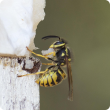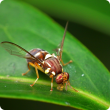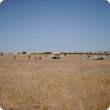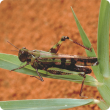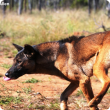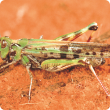Biosecurity
Biosecurity is fundamental for safeguarding our valuable agricultural resources against the threat and impacts of pests, weeds and diseases (pests).
Biosecurity is the management of the risk of animal and plant pests and diseases entering, emerging, establishing or spreading in Western Australia, to protect our economy, environment and the community.
To protect Western Australian agricultural industries from pests the Department of Agriculture and Food, Western Australia:
- Works with stakeholders to identify and manage biosecurity risks.
- Develops legislation.
- Establishes import controls.
- Conducts inspections.
- Provides quarantine services as required.
To find out more about what we do to protect agricultural production and export opportunities within the State please search our website.
Filter by search
Filter by topic
- (-) Remove Invasive species filter Invasive species
- Pests, weeds & diseases (36) Apply Pests, weeds & diseases filter
- Pests (21) Apply Pests filter
- Weeds (14) Apply Weeds filter
- Pest animals (12) Apply Pest animals filter
- Declared plants (11) Apply Declared plants filter
- Pest insects (9) Apply Pest insects filter
- Control methods (9) Apply Control methods filter
- Livestock & animals (7) Apply Livestock & animals filter
- Livestock management (6) Apply Livestock management filter
- Baits & poisons (5) Apply Baits & poisons filter
- Chemicals (5) Apply Chemicals filter
- Pest mammals (4) Apply Pest mammals filter
- Plant biosecurity (4) Apply Plant biosecurity filter
- Birds (4) Apply Birds filter
- Quarantine (3) Apply Quarantine filter
- Mechanical, physical and cultural (3) Apply Mechanical, physical and cultural filter
- Sheep (3) Apply Sheep filter
- State Barrier Fence (3) Apply State Barrier Fence filter
- Diseases (3) Apply Diseases filter
- Livestock species (3) Apply Livestock species filter
- 1080 (3) Apply 1080 filter
- Beef cattle (3) Apply Beef cattle filter
- Livestock biosecurity (3) Apply Livestock biosecurity filter
- Strychnine (2) Apply Strychnine filter
- Intrastate movement (2) Apply Intrastate movement filter
- Management & reproduction (2) Apply Management & reproduction filter
- Importing to Western Australia (2) Apply Importing to Western Australia filter
- Fungi (2) Apply Fungi filter
- Importing plant and plant products (1) Apply Importing plant and plant products filter
- Weeds of National Significance (1) Apply Weeds of National Significance filter
- Importing miscellaneous (1) Apply Importing miscellaneous filter
- Emergency response (1) Apply Emergency response filter
- Amphibians and reptiles (1) Apply Amphibians and reptiles filter
- European house borer (1) Apply European house borer filter



